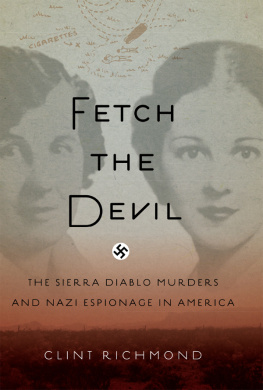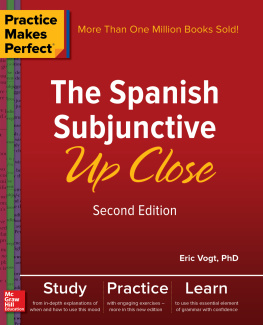To obtain material from the disk that accompanies the printed version of this eBook, please .
Material from the disk that accompanies the printed version of this eBook may be obtained from McGraw-Hill Professionals MediaCenter at http://mhprofessional.com/mediacenter. Some material may require a desktop or laptop computer for full access. Enter this eBooks ISBN and your e-mail address at the MediaCenter to receive an e-mail message with a download link. This eBooks ISBN is 978-0-07-180413-4.

Copyright 2013 by The McGraw-Hill Companies, Inc.
All rights reserved. Except as permitted under the United States Copyright Act of 1976, no part of this publication may be reproduced or distributed in any form or by any means, or stored in a database or retrieval system, without the prior written permission of the publisher. ISBN: 978-0-07-180413-4
MHID: 0-07-180413-7 The material in this eBook also appears in the print version of this title: ISBN: 978-0-07-180412-7, MHID: 0-07-180412-9. All trademarks are trademarks of their respective owners. Rather than put a trademark symbol after every occurrence of a trademarked name, we use names in an editorial fashion only, and to the benefit of the trademark owner, with no intention of infringement of the trademark. Where such designations appear in this book, they have been printed with initial caps.
McGraw-Hill eBooks are available at special quantity discounts to use as premiums and sales promotions, or for use in corporate training programs. To contact a representative please e-mail us at bulksales@mcgraw-hill.com. McGraw-Hill, the McGraw-Hill Publishing logo, Practice Makes Perfect, and related trade dress are trademarks or registered trademarks of The McGraw-Hill Companies and/or its affiliates in the United States and other countries and may not be used without written permission. All other trademarks are the property of their respective owners. The McGraw-Hill Companies is not associated with any product or vendor mentioned in this book TERMS OF USE This is a copyrighted work and The McGraw-Hill Companies, Inc. (McGraw-Hill) and its licensors reserve all rights in and to the work.
Use of this work is subject to these terms. Except as permitted under the Copyright Act of 1976 and the right to store and retrieve one copy of the work, you may not decompile, disassemble, reverse engineer, reproduce, modify, create derivative works based upon, transmit, distribute, disseminate, sell, publish or sublicense the work or any part of it without McGraw-Hills prior consent. You may use the work for your own noncommercial and personal use; any other use of the work is strictly prohibited. Your right to use the work may be terminated if you fail to comply with these terms. THE WORK IS PROVIDED AS IS. McGRAW-HILL AND ITS LICENSORS MAKE NO GUARANTEES OR WARRANTIES AS TO THE ACCURACY, ADEQUACY OR COMPLETENESS OF OR RESULTS TO BE OBTAINED FROM USING THE WORK, INCLUDING ANY INFORMATION THAT CAN BE ACCESSED THROUGH THE WORK VIA HYPERLINK OR OTHERWISE, AND EXPRESSLY DISCLAIM ANY WARRANTY, EXPRESS OR IMPLIED, INCLUDING BUT NOT LIMITED TO IMPLIED WARRANTIES OF MERCHANTABILITY OR FITNESS FOR A PARTICULAR PURPOSE.
McGraw-Hill and its licensors do not warrant or guarantee that the functions contained in the work will meet your requirements or that its operation will be uninterrupted or error free. Neither McGraw-Hill nor its licensors shall be liable to you or anyone else for any inaccuracy, error or omission, regardless of cause, in the work or for any damages resulting therefrom. McGraw-Hill has no responsibility for the content of any information accessed through the work. Under no circumstances shall McGraw-Hill and/or its licensors be liable for any indirect, incidental, special, punitive, consequential or similar damages that result from the use of or inability to use the work, even if any of them has been advised of the possibility of such damages. This limitation of liability shall apply to any claim or cause whatsoever whether such claim or cause arises in contract, tort or otherwise. To Lily Solveig Richmond and Daisy Astrid Richmond
Contents
Preface
Language, like all forms of art and beauty, is about making connections and enhancing life.
Any human action, from writing a novel to taking a walk, can be raised to the level of art. It can also be reduced to mechanics: functional, but lifeless. As you study Spanish, you can choose to approach it as an art form or as a practical tool for communicating with others, or anything in between. The language itself and its various opportunities do not changethey are there for the taking. What you come away with is based on your choice of orientation. Both approachesartistic and utilitarianrequire diligence and hard work, with attention paid to both grammar and vocabulary.
A lopsided approach, however, can greatly diminish your enjoyment and success.
Language is like a house
Think of learning a language the way a fine house is built. First comes the foundation. The structure must be solid, well thought out, of quality material and craftsmanship. Measurements must be exact, lines straight, surfaces level. Laying a foundation is serious business, and structure, rules, and formulae tried and truenot originalityreign.
In language, this foundation is called grammar, a feature as necessary as architectural footings, even though it has been unconscionably discounted in recent years. Imagine what a building would look like if its foundation were not solid. This is exactly what happens to language when the grammatical structure is shaky: It crumbles. Where the careless builder now has a pile of rubble, the inattentive student of language is surrounded by a mountain of words, each potentially useful, some even complex and beautiful, but rendered useless in the absence of structure. Thus it is that this booka text designed to build your vocabularybegins not with a flurry of words, but with a solid introduction to Spanish grammar.
Purpose and organization of this book
Practice Makes Perfect: Spanish Vocabulary offers you the maximum amount of vocabulary with the minimum amount of grammar needed to give the words life.
Purpose and organization of this book
Practice Makes Perfect: Spanish Vocabulary offers you the maximum amount of vocabulary with the minimum amount of grammar needed to give the words life.
The nitty-gritty technical and grammatical aspects of the languagewhich are endless and will be debated long after were all goneare not included. Instead, you are given all the tools any student needs to speak, hear, understand, and create Spanish at a conversational level. This book is a marvelous companion to every classroom text on the market. The book is presented entirely in the present tense, so that you can focus on the words being introduced, and you can keep the necessities of grammar in the picture without complicating it. When historical figures are mentioned, you are asked to imagine that they are still alive. In the unit Preliminary matters, the basics are given: the Spanish alphabet, a pronunciation guide, numbers, punctuation, word recognition, common greetingsa kindergarten of sorts for a Spanish student of any age.
The main body of the text includes ten units, each covering hundreds of new vocabulary words, along with the grammatical structures that give them life. As you work through the text, you will sense the intimate connection between grammar and vocabulary: Each needs the other to be meaningful.
Next page









 Copyright 2013 by The McGraw-Hill Companies, Inc.
Copyright 2013 by The McGraw-Hill Companies, Inc.